The Senecio scaposus is native to South Africa, where it is predominantly found in the rocky areas of the Little Karoo in the Eastern Cape. This is a hot, dry area, making this succulent ideal for such conditions.
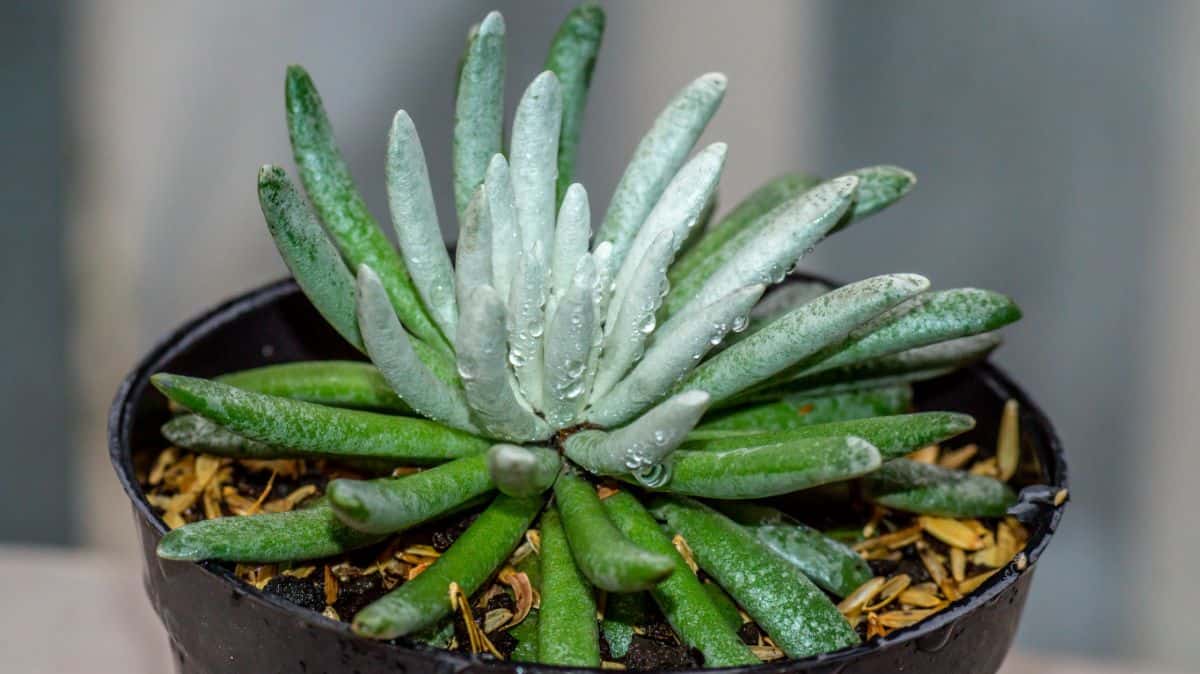
Also known as the Woolly senecio, the Senecio scaposus has a hairy-looking coating on its leaves, to protect it from the elements.
Because it does not grow very tall, the Senecio scaposus is highly suitable for growing in containers.
Jump to:
Senecio Scaposus Appearance
| Name: | Senecio scaposus |
| Soil: | Well-drained soil |
| Blooming: | Late spring to early summer |
| Light: | Full sun partial shade |
| Water: | When the soil is completely dry |
| Propagation: | Cutting or seeds. |
The Senecio scaposus is a somewhat unusual-looking succulent. With its fine, hairy coating, it has a silver shimmer to the leaves.
It has a very short stem, or sometimes almost no stem at all. It grows close to the soil and makes an excellent ground cover. It will usually reach a maximum height of only 12 inches.
The leaves are long, reaching a length of 3-4 inches. They are curved, and face upwards. Green in color, they might look silver because of their woolly coating. Underneath this coating, the leaves are a waxy green with a blue tinge.
The leaves grow in a rosette formation, and the rosettes themselves become thicker as new leaves emerge from the center. They will reach a diameter of about 4-5 inches.
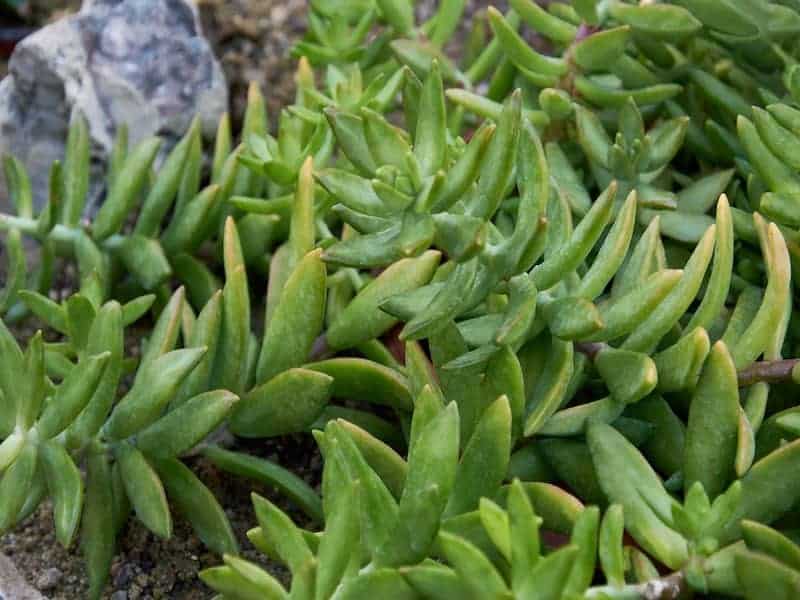
Buy it from:
The Senecio scaposus blooms in late spring to early summer. The flowers are small and yellow, and almost resemble daisies in appearance.
Caring for Senecio scaposus
The Senecio scaposus is not a difficult succulent to cultivate. It grows wildly in its native habitat and will flourish in most areas with similar conditions.
Light
The Senecio scaposus needs quite a lot of natural sunlight. If you are planting in outdoor beds, choose a position that gets full sun for most of the day, with some filtered shade. This succulent needs at least 6 hours of direct sunlight every day.
It is also important to ensure that it does have enough shade. If overexposed to the sun, your Senecio scaposus may suffer sunburn, which can be very harmful and do a lot of damage to the leaves.
If you prefer to cultivate indoor succulents, choose a spot in a warm room with a south-facing window. Your Senecio scaposus will do very well in a pot on the windowsill.
If your house does not get sufficient natural light, it is a good idea to use a grow light. This is an artificial light that is designed for cultivating plants, as it mimics natural sunlight. They can be obtained from most nurseries and garden centers.
Water
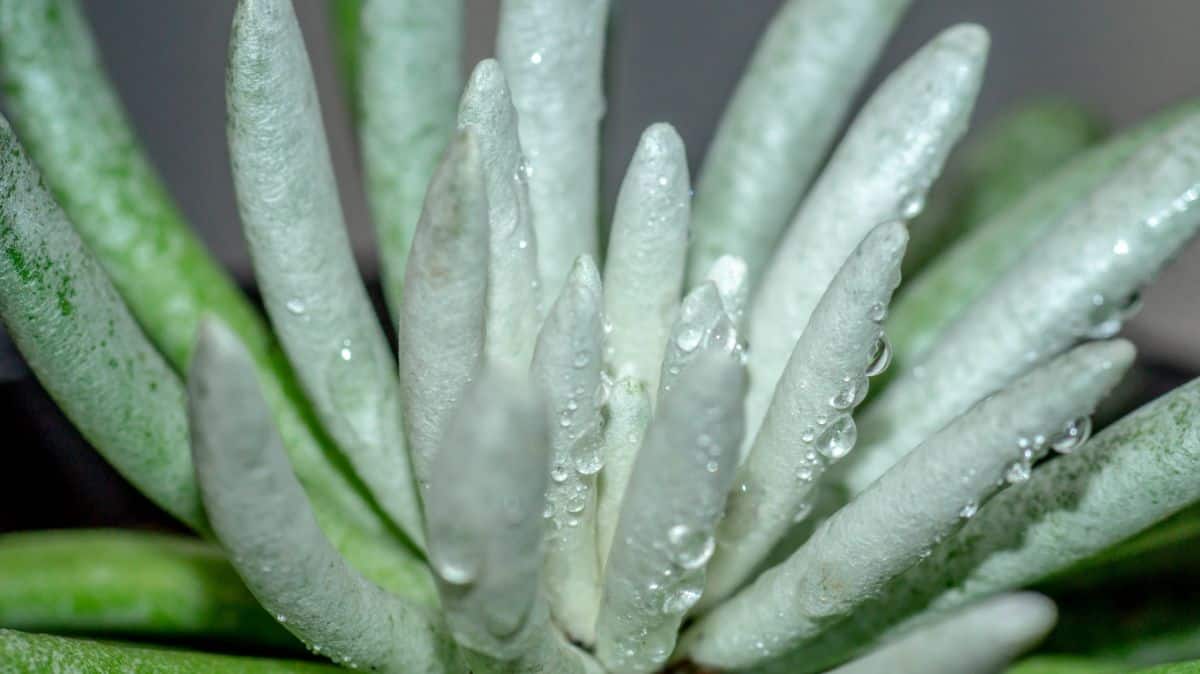
Because the Senecio scaposus originates from an area with very arid conditions, it is a succulent that does not need a lot of water. In fact, it is more likely to suffer the ill-effects of too much water, rather than not enough water.
No products found.
Your Senecio scaposus only needs to be watered about once a week in summer, possibly even less frequently. When watering your plant, it should be thoroughly soaked, and then left to dry completely before watering again. Insert a finger, or even a wooden skewer, into the soil to check if it is totally dry before you water it again.
If it is watered too often, the roots will remain constantly damp, and it is very likely that they will start to rot or develop a fungal infection. The container should have a few drainage holes at the bottom, to allow excess water to run off freely.
This succulent needs even less water in winter. It is dormant through most of the winter months when the plant remains stagnant and very little growth takes place. Therefore it needs very little water during this period.
Temperature
The Senecio scaposus will thrive in warm temperatures. It is not used to intense cold, and will not survive temperatures below 20° Fahrenheit.
If you live in a zone with a mild climate, you can plant these succulents directly into the ground outdoors, and they should thrive. However, if the temperature frequently drops below 20°, it is preferable to plant them in containers that can be brought inside during inclement weather.
The Senecio scaposus cannot tolerate heavy frost. If overnight frost is expected, it is crucial that your plants should either be covered to protect them, or they should be taken indoors.
For an indoor Senecio scaposus, choose a room in the house that has a more-or-less constant temperature that is not too cold. This succulent will flourish in a warm room with lots of natural sunlight.
Soil
The Senecio scaposus needs a soil environment with excellent drainage. The soil should be sandy and made up of a blend of cactus potting soil and coarse sand. It can also be useful to add some perlite or pumice to the soil, to encourage good drainage.
This succulent needs a lot of nutrients. Sandy soil is often low in nutrients. Therefore it is advisable to apply a light dose of fertilizer once or twice a year, to help to nourish the soil.
Propagating the Senecio Scaposus
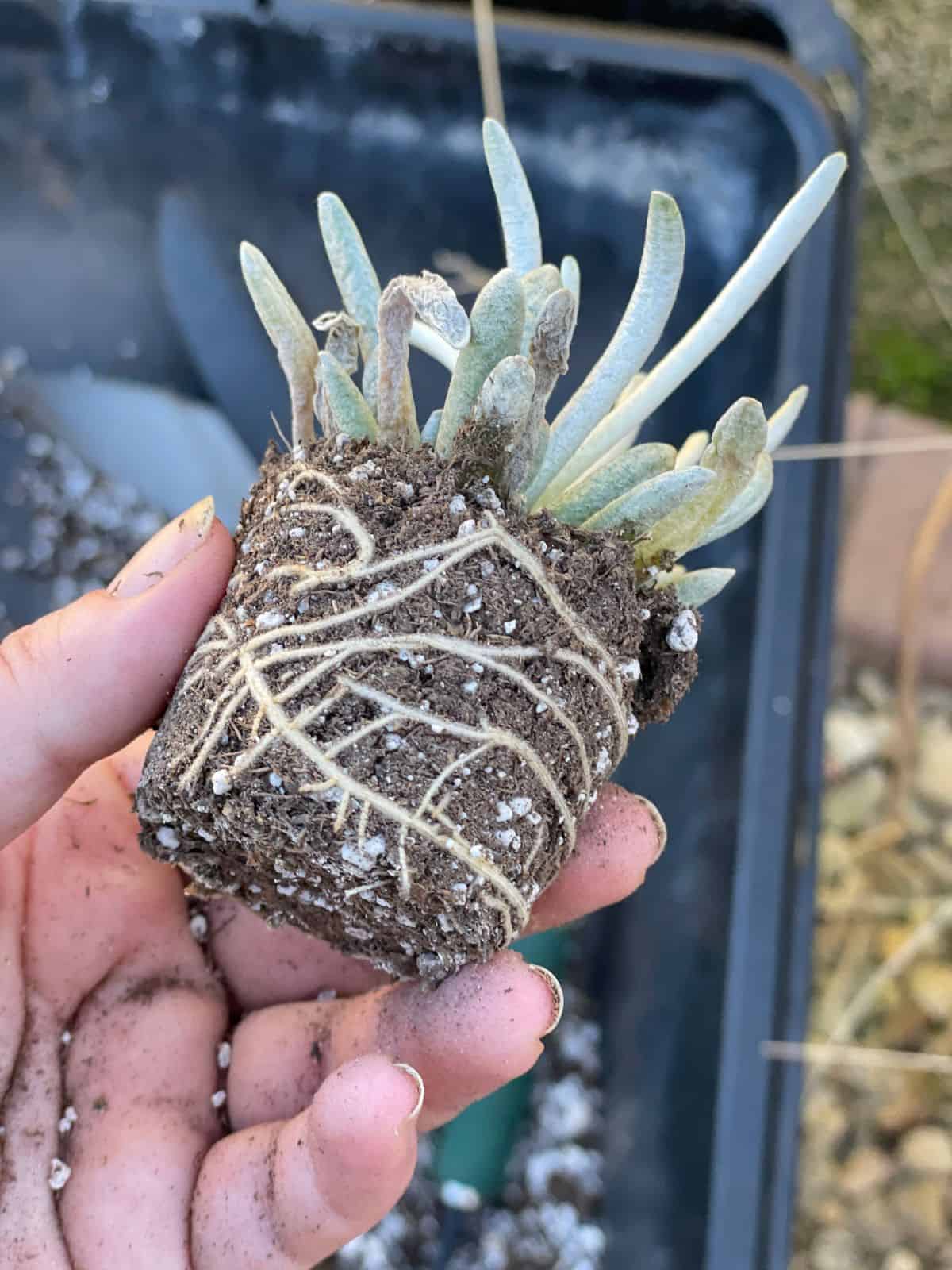
The Senecio scaposus can be successfully propagated either from seeds or from cuttings.
Propagating from seeds
While propagating the Senecio scaposus from seeds is not always successful, it can be done. It is crucial to use high-quality seeds, to begin with, otherwise, they will not germinate.
You will need a planting tray with drainage holes at the bottom. Fill the tray with soil, as described above. Water the soil lightly, and then sprinkle the seeds on top of the soil. Press down lightly with the palm of your hand, but do not actually bury the seeds in the soil.
Water lightly every few days, and the seeds should germinate and start sprouting. Eventually, the shoots will take root, and the little seedlings can be repotted into containers.
Read Related Topic: Sempervivum Heuffelii Succulent Care Guide
Propagating from cuttings
While it is a lot of fun, and very satisfying, to grow your own succulents from scratch using seeds, you are far more likely to have success if you propagate with cuttings.
Using a clean, sharp pair of gardening scissors, cut a piece as close to the base of the stem as possible. Leave it to stand for a few days, allowing it to dry out completely. It should form a callous after 3 or 4 days.
Once it has calloused, the cutting should be inserted into a pot of prepared soil and watered lightly. Until such time as you have a viable plant growing, water it every few days.
Once the plant is more established, the watering schedule should be reduced, as described under the watering section in this article. Your Senecio scaposus should flourish and grow well.
Common Pests and Problems
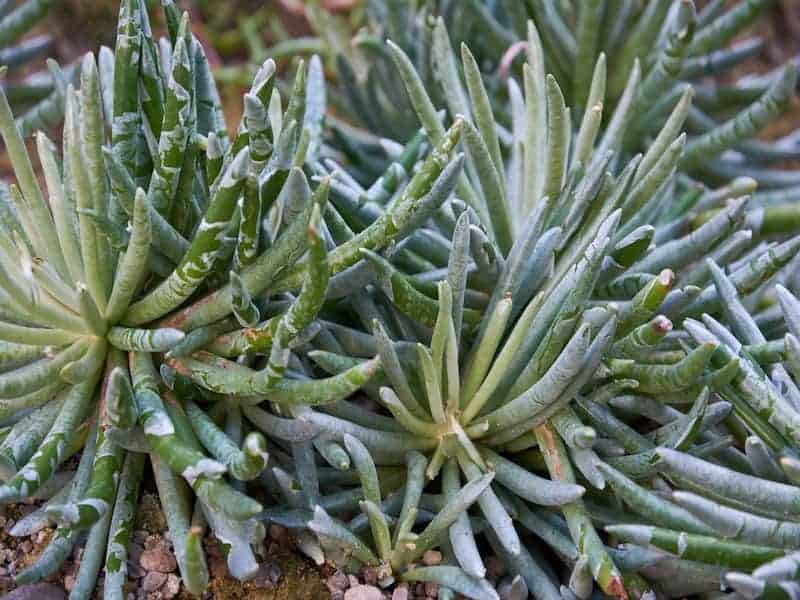
The most common problems are overwatering, and bugs.
Overwatering
Many people tend to either give their succulents too much water at once or to water them too frequently. Both can be damaging to the plant.
If the roots are left to sit in soil that is permanently damp, they will rot and the plant will die.
You May Also Like: Tugela Cliff-Kalanchoe (Kalanchoe Longiflora Coccinea) - A Care Guide
Pests and bugs
The Senecio scaposus is prone to infestation of mealybugs. These are tiny little insects. It is very difficult to see the actual insects themselves, but if your plant is infested, there will be tell-tale signs on the leaves.
You will notice a whitish coating on the leaves, that almost looks like a fungal growth. While it is possible to wipe this off, it will not eradicate the bugs. The only way to eliminate them completely is with a commercial pesticide.
Sources:
https://worldofsucculents.com/senecio-scaposus-woolly-senecio/


